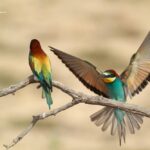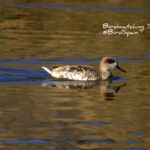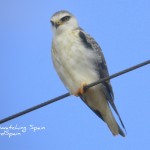Birdwatching and wildlife tours in Spain
Bird watching tour Doñana
A bird watching tour Doñana is a must for all keen birders. This stunning National and Natural Park (108086 ha) hold an incredible variety of wildlife. Among them, the threatened Spanish Imperial Eagle, Marbled Teal, Red-knobbed Coot, and the Iberian Lynx. Its privileged location close to Africa, and between the Mediterranean Sea and the Atlantic Ocean, makes Doñana an excellent birding area where over 300 species can be observed throughout the year.
Day 1. Bird watching tour Doñana (Northern Area)
The best places to watch birds in Doñana are in the surroundings of the National Park. We will get to the Northern Doñana area driving through farmland, rice fields, and marshlands close to the mouth of the Guadalquivir River. In other words, there is a long drive to the visitor center of Valverde but it is worth it. This area is excellent for birding, especially in the wet season. Then, we will go to the “Dehesa” near the rice fields where several species of waterfowl can be spotted, including Marbled and White-headed Ducks. Some of the target resident birds are Glossy Ibis, Spoonbill, Red-knobbed Coot, Red-crested Pochard, Little and Cattle Egret, Night and Squacco Heron, and thousands of Flamingos.
In the surrounding areas, we will look out for Hoopoe, Stone Curlew, Spanish Sparrow, Lesser Short-toed Lark, and Pin-tailed Sandgrouse. In summer, the arrival of Short-toed Lark, Purple and Night Heron, Gull-billed Tern, Short-toed Eagle, Black Tern, the beautiful Roller, Western Olivaceous Warbler, and the rare Rufous Bush Robin makes even more interesting this bird watching tour Doñana.
Day 2. Bird watching tour Doñana (Southern Area)

Doñana is a vast area and at least 2 days are needed to visit the most interesting points. In the South, we will visit the Asperillo, a scrubland on old dunes where we will look for warblers. Then we will go close to the river La Rocina. This river feeds the marshes at El Rocio and can be an astonishing birding spot when it is wet. Nearby, there are several hides and nice footpaths where we will be able to observe many species of waterfowl and aquatic birds.
Some of the summer residents we will look for are Savi’s Warbler, Bee-eater, Little Bittern, Gull-billed Tern, Booted Eagle, Whiskered Tern, and Subalpine Warbler. In addition, you may also catch a glimpse of the rare Spanish Imperial Eagle. Besides, we will look for White-headed Ducks during this second day.
In winter, the area is teeming with life. We expect to see large numbers of wildfowl and waders. Great White Egret, Osprey, Black-tailed Godwit, and a large number of waders visit Doñana. During migration, Garganey and Temminck’s Stint are regularly seen.
Day 3. Odiel Marshes
Odiel Marshes is the second largest wetland in Huelva province after Doñana and the most important tidal wetland in Spain. The silt of the rivers Odiel and Tinto created this area and in this estuary, we can find a paradise for birds. This is a day out to look for waders, seabirds, and other aquatic birds. Through the road that connects some of the islands on the Odiel Marshes, we will get to the visitor center. After that, we will continue looking for birds along the mudflats. Finally, we will go to El Portil to enjoy observing the scenery and birds from a platform that offers a panoramic view. Some of the resident birds are Marsh Harrier, Spoonbill, Hoopoe, Spanish Sparrow, Kentish Plover, and Black-winged Stilt.
In winter, the area is occupied by Great White Egret and a large number of waders: Sandpipers, Dunlin, Gannet, Osprey, Grey Plover, Godwits, Sanderling, Greenshank, and Whimbrel. The area is also used for other wintering species such as Audouin’s Gull, Sandwich and Caspian Tern, and Bluethroat. In summer birds such as Montagu’s Harrier, Bee-eater, and Little Bittern use Odiel Marshes to breed. In addition, other residents include Little Tern, Collared Pratincole, and Red-rumped Swallow.
As you can see, this bird watching tour Doñana offers the possibility of seeing a wide variety of rare species with the help of a local guide. In addition, this itinerary can be combined with other destinations such as the Strait of Gibraltar, Andújar to see the lynx and/or Granada for birds but also orchids and butterflies. Please, do not hesitate to contact us for more information and a quotation.

